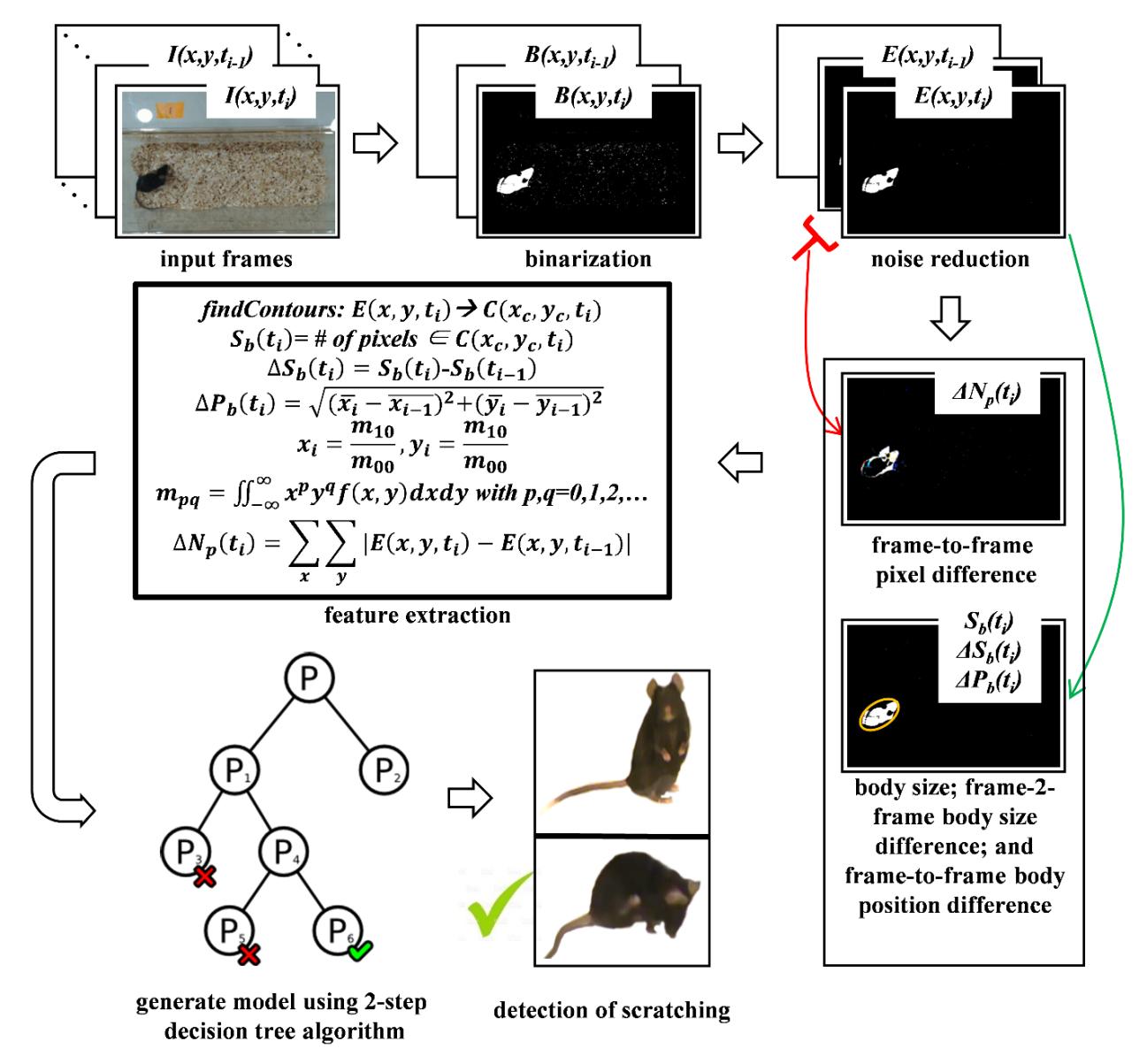Articles
Article Tools
Stats or Metrics
Article
Technologue
Exp Neurobiol 2019; 28(1): 54-61
Published online February 11, 2019
https://doi.org/10.5607/en.2019.28.1.54
© The Korean Society for Brain and Neural Sciences
Machine-Learning Based Automatic and Real-time Detection of Mouse Scratching Behaviors
Ingyu Park1, Kyeongho Lee2, Kausik Bishayee3, Hong Jin Jeon4, Hyosang Lee2*, and Unjoo Lee1*
1Department of Electrical Engineering, Hallym University, Chuncheon 24252, Korea.
2Department of Brain and Cognitive Sciences, DGIST, Daegu 42988, Korea.
3Department of Pharmacology, College of Medicine, Hallym University, Chuncheon 24252, Korea.
4Department of Psychiatry, Depression Center, Samsung Medical Center, Sungkyunkwan University School of Medicine, Seoul 06351, Korea.
Correspondence to: *To whom correspondence should be addressed.
Unjoo Lee, TEL: 82-33-248-2354, FAX: 82-33-242-2524
e-mail: ejlee@hallym.ac.kr
Hyosang Lee, TEL: 82-53-785-6147, FAX: 82-53-785-6109
e-mail: hyosang22@dgist.ac.kr
Abstract
Scratching is a main behavioral response accompanied by acute and chronic itch conditions, and has been quantified as an objective correlate to assess itch in studies using laboratory animals. Scratching has been counted mostly by human annotators, which is a time-consuming and laborious process. It has been attempted to develop automated scoring methods using various strategies, but they often require specialized equipment, costly software, or implantation of device which may disturb animal behaviors. To complement limitations of those methods, we have adapted machine learning-based strategy to develop a novel automated and real-time method detecting mouse scratching from experimental movies captured using monochrome cameras such as a webcam. Scratching is identified by characteristic changes in pixels, body position, and body size by frame as well as the size of body. To build a training model, a novel two-step J48 decision tree-inducing algorithm along with a C4.5 post-pruning algorithm was applied to three 30-min video recordings in which a mouse exhibits scratching following an intradermal injection of a pruritogen, and the resultant frames were then used for the next round of training. The trained method exhibited, on average, a sensitivity and specificity of 95.19% and 92.96%, respectively, in a performance test with five new recordings. This result suggests that it can be used as a non-invasive, automated and objective tool to measure mouse scratching from video recordings captured in general experimental settings, permitting rapid and accurate analysis of scratching for preclinical studies and high throughput drug screening.
Graphical Abstract

Keywords: Machine learning, Decision tree, Mouse, Scratching, Pruritus, Itch


